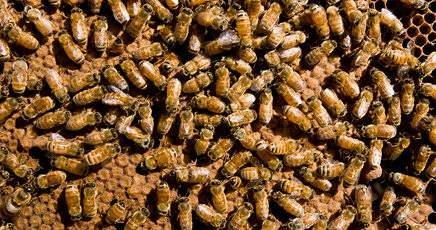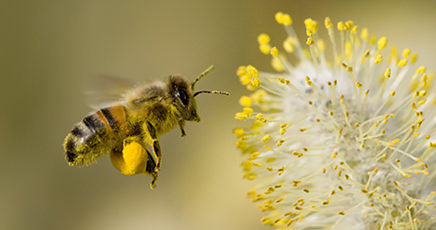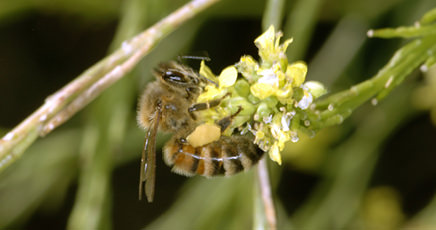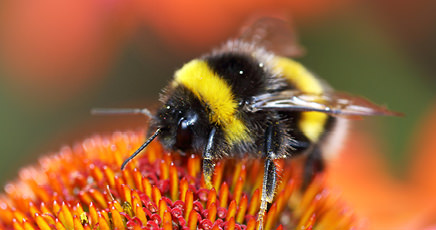STORY
“Bees are very important insects my darling Suyin, not only do they help produce your favourite breakfast item, but they are very important to helping us grow our food and flowers. Bees pollinate many fruit and vegetable flowers including tomatoes, watermelon, passion fruits, apples, cherries, strawberries and mangoes. If we take care of the bees, the bees will take care of us.”
Suyin has been hearing grandfather’s words for as long as she can remember. While some of her friends saw bees to be annoying insects buzzing around, Suyin was fascinated. Instead of running away every time a bee buzzed around her, Suyin instead stopped to wonder. What type of bee are you? What is your local habitat like? Do you know how important you are?

We’re going to explore bees! Explore the different types of bees common to Australia, their features including how they are different to flies and wasps. We will focus on native bees, specifically to learn about their nesting habitat.
This learning activity is the first part of a sequence of 2 individual learning activities focused on creating a bee hotel to help support native bee populations. The order of these learning activities are: research and construction.
We encourage our Junior Landcarers to learn more about other pollinators including European honey bees in the Creating a beneficial garden sequence: assessment, investigation and planting.
For children to:
- understand the features of bees, the differences between bees, flies and wasps
- learn more about native bees, focusing on Reed Bees and their nesting behaviour
- appreciate the native bees that are local to their area, connecting with local experts
- value the importance of creating a bee hotel to support native bee populations.
While this activity can be undertaken any time of year, bees are likely to be more visible in sunny, warm and calm weather.
Introduction
Before embarking on this learning activity, we encourage our Junior Landcarers to learn more about beneficial insects by doing the Creating a beneficial garden activity series to further provide our young learners the opportunity to learn more about invertebrates, focusing on pollinators and beneficial planting. This will help our young learners understand the importance of this activity and build their commitment.
Upon completion of this learning activity, children will have developed a deeper understanding of bees, including their identifying features and native habitat so that they can help protect them.
*Additional time may be spent in consultation with your local Landcare group, council or Indigenous Elders.
Checklist
Instructions
Step 1
Tuning in
Before we design and create our bee hotel, we first need to understand the organisms that we are supporting. What do we think we know about bees? What are the types of bees that we commonly see? How are bees different to flies and wasps?
Discuss and brainstorm in groups, perhaps allocating each group a type of bee to research, so the information is visible for all to see, e.g. poster paper, whiteboard, devices or interactive whiteboard.
Do we need to fact-check any of these statements? Get children to verify any statements that they may not be certain of by gathering supporting information.
Step 2
Delving deeper
Are there gaps in our learning?
What are some different types of native bees? Research their features including their size, foraging habits and nesting habitats.
Consult your field guide for more information and use resources (digital or printed) as recommended in the reference list, to research more information on the chosen native bee.
Think about what people can create to mimic the bees’ nesting habitat.
What questions do we still have? Discuss and brainstorm.
Step 3
Honing in
It is essential to understand the specific needs of native bees local to your area. Use a digital or print native bee guide to identify bees local to your area.
Are there experts who can help with your investigations? Connect with your local Landcare group, environmental community group, local council ranger or Indigenous Elders.
Step 4
Processing and applying learning
How are we going to use this prior and new found knowledge to create a suitable habitat for local bee species?
Focusing on reed bees, complete the activity sheet to record your learnings.
Discuss the next steps, preparing for the construction phase.
Extension Activity
Create a children’s story that includes native bees and their habitat. You may like to ask others to help you write and illustrate the story using the research you have conducted.
Research how Stingless Bee honey; ‘sugarbag’ is collected and used by Aboriginal people.
Curriculum and Framework Links
SCIENCE
Year 2: ACSSU030, ACSHE035
Year 3: ACSSU044, ACSIS054
Year 4: ACSHE062, ACSIS064
Year 5: ACSHE083
Year 6: ACSSU094, ACSHE100
Year 7: ACSHE120
Year 8: ACSHE135
HUMANITIES AND SOCIAL SCIENCES
Year 2: ACHASSI042
Year 3: ACHASSI052, ACHASSI059, ACHASSI060
Year 4: ACHASSI080, ACHASSK088, ACHASSK090
Year 5: ACHASSI102, ACHASSK120
Year 6: ACHASSI122, ACHASSI130
DESIGN AND TECHNOLOGIES
Year 2: ACTDEK003
Year 3 & 4: ACTDEP017
Year 5 & 6: ACTDEP019
Year 7 & 8: ACTDEK032
HEALTH AND PHYSICAL EDUCATION
Year 2: ACPPS018, ACPPS022, ACPPS023
Year 3 & 4: ACPPS036, ACPPS040, ACPPS041
Year 5 & 6: ACPPS054, ACPPS059
Year 7 & 8: ACPPS073, ACPPS078
ETHICAL UNDERSTANDING
Exploring values, rights and responsibilities
PERSONAL AND SOCIAL CAPABILITY
Social awareness
CURRICULUM CONNECTIONS
Outdoor Learning
CROSS CURRICULUM PRIORITY
Sustainability
Aboriginal and Torres Strait Islander Histories and Cultures
MY TIME, OUR PLACE: FRAMEWORK FOR SCHOOL AGE CARE
Outcome 2 and 4
Reference List
ONLINE RESOURCES
Learn about the features of bees and what makes them unique from sawflies and wasps and Reed Bee facts from the Australian Museum.
This Bee heroes digibook from ABC Education incorporates video and information on Australian native and European Honey Bees.
PRINTABLE RESOURCES
Insect identification tips from Wild Pollinator Count will help to identify the differences between bees, flies and wasps and other insects.
Bees Business resources on native bees include: the Native Bee Brochure, with information on nesting habitat and features on Resin Bees, Reed Bees and Masked Bees.
Further information about Reed Bees is available from Rita the Reed Bee, differences between Australian native bees and flies, differences between bees and wasps.
WATCH
Watch and learn about the large variety of Australian native bees and how using plants and native bee hotels can encourage them to flourish in local environments. from ABC’s Gardening Australia. (6 minutes 20)
IMAGE ATTRIBUTION
Feature image:Bee on Lupin plants in flower at ‘Gundibindyal’, near Temora, NSW. Photographer: Carl Davies
OTHER IMAGES:
European Honeybees (Apis Mellifera) collecting pollen. Photographer: Denis Anderson
European Honeybees (Apis Mellifera) in a hive. Photographer: Nick Pitsas
Regeneration of yellow paper daisies after fire at the Uriara Forest, ACT. Photographer : Carl Davies
We value your feedback
When you have finished this learning activity, please tell us what you think with our survey.
Your feedback will help Landcare Australia improve the activities in the Junior Landcare Learning Centre.
Why not try one of our other Junior Landcare learning activities?
Creating a butterfly garden
Biodiversity
Love Letters to the Land
Biodiversity|First Nations Perspectives|Food Production|Waste Management
Creating a sensory garden
Biodiversity
Understanding weeds: life cycle
Biodiversity



